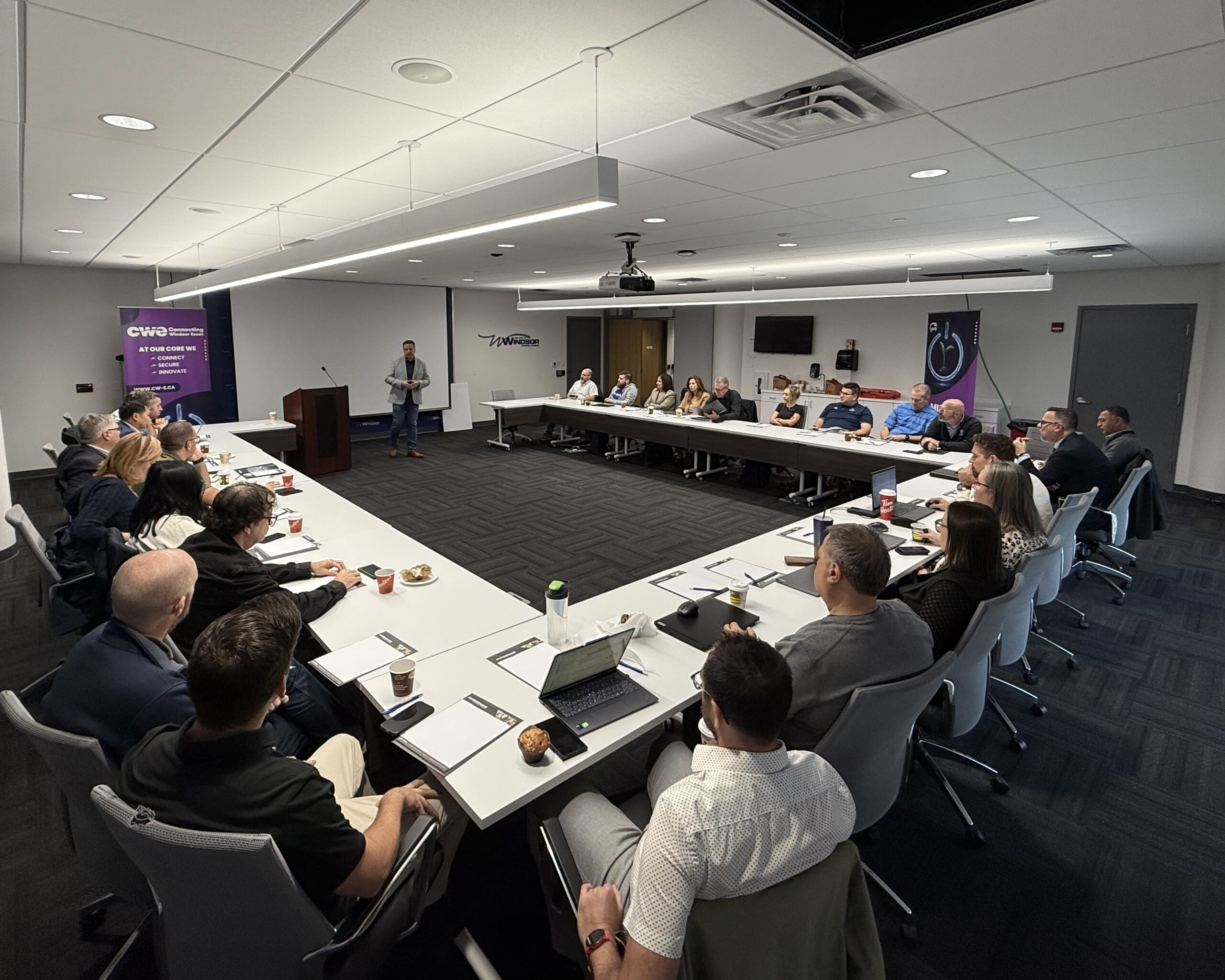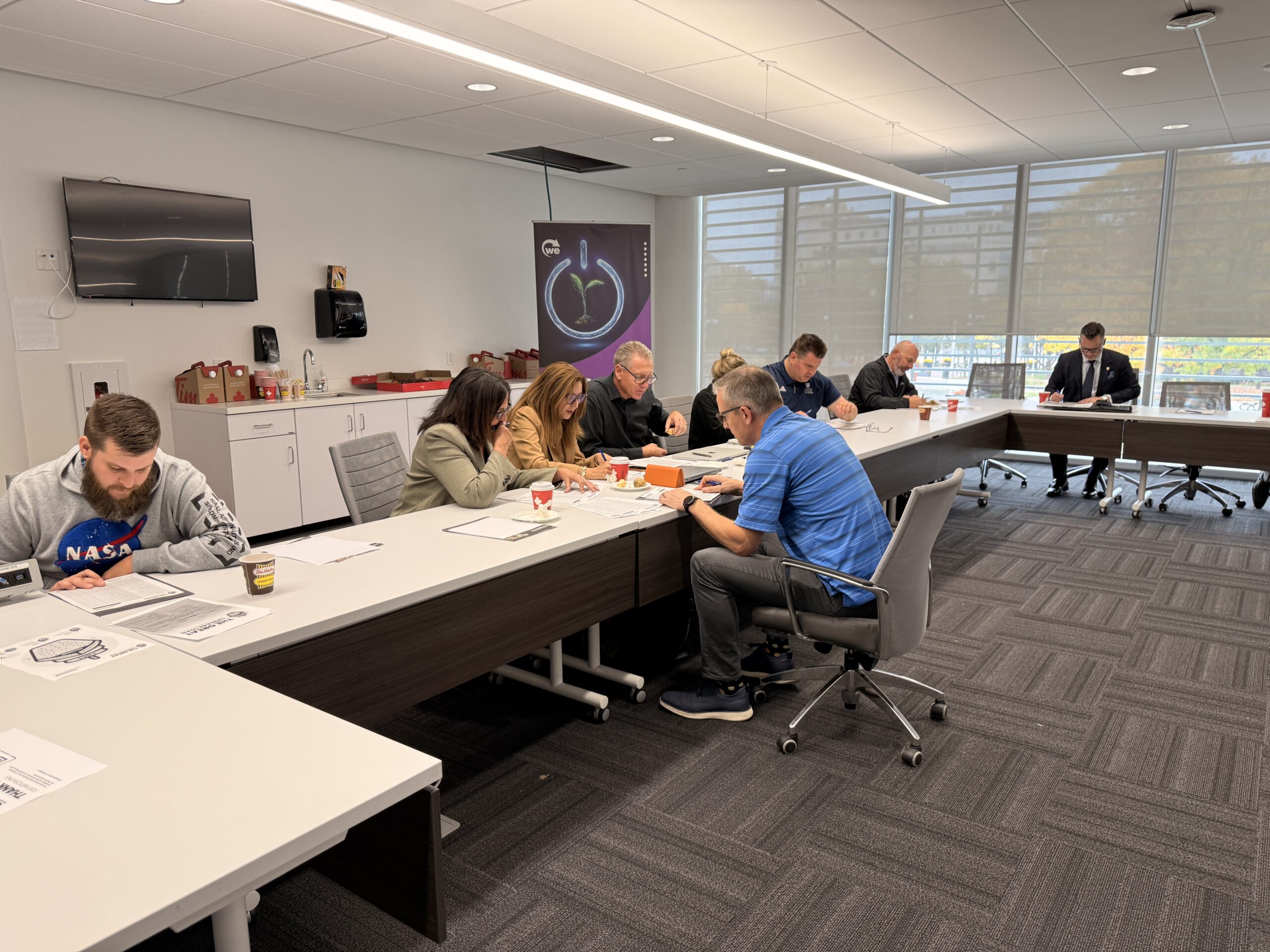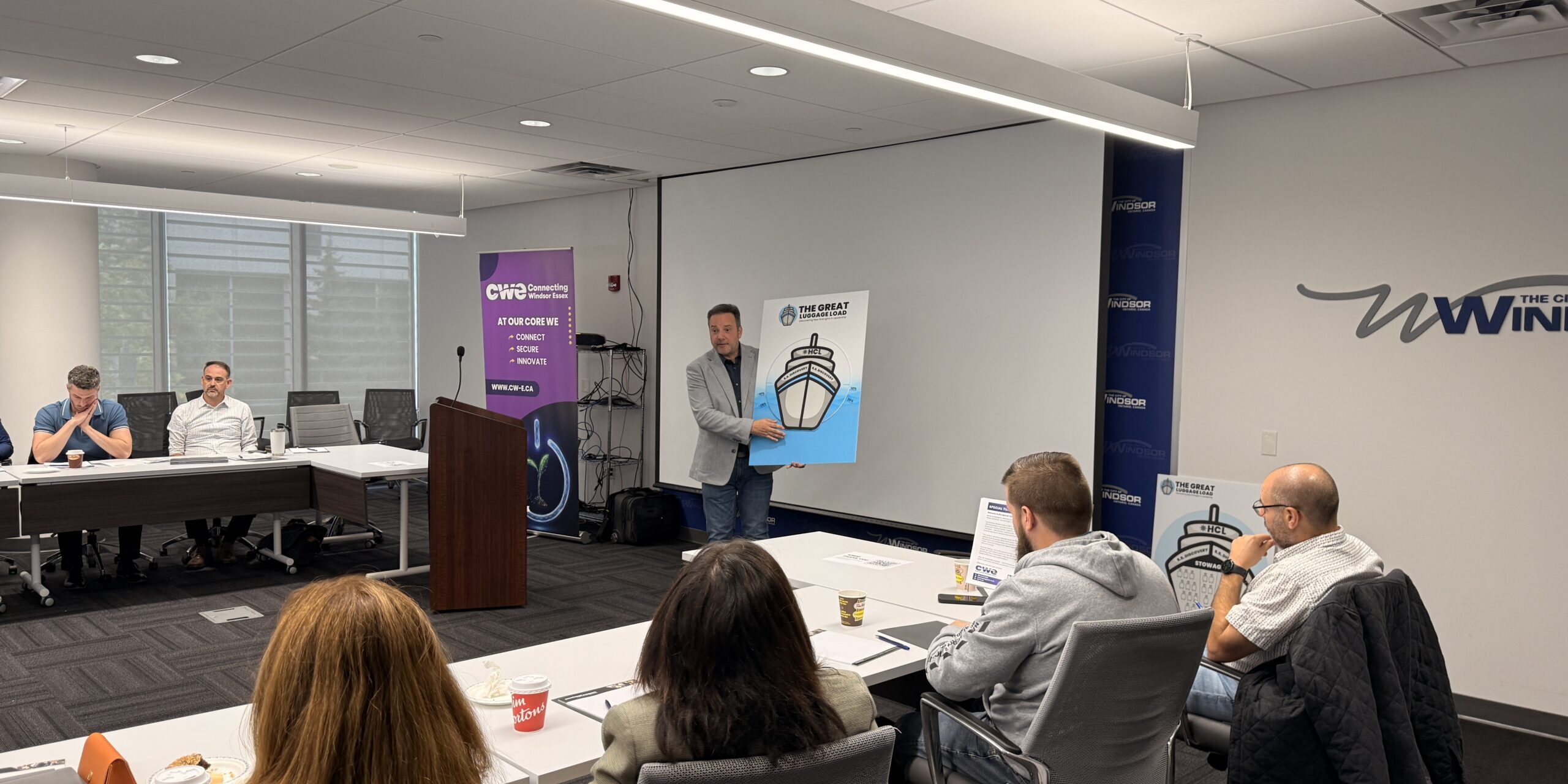Header image: Matt Dunlop, Founder & Lead Facilitator at Mainstream Corporate Training, presents at the The Future of Leadership: Clarity, Trust & Collaboration Special Topics session.
The Common Thread
There’s no training manual for becoming a CEO. I wish there was, though I suspect even if there was, I’d still learn most of it the hard way. One could say, I like a challenge. There’s no perfect playbook for leadership either, if there was, our Senior Project Manager, Laura McCabe would have written it by now! Especially not one that tells you how to lead with heart. Is that even a thing anymore? Some days it feels like the industry left its heart somewhere between budget cuts and KPI’s.
When I think about my career journey- from enterprise level sales to overseeing business operations and eventually stepping into the CEO role, the common thread has always been people. Whether I was helping solve a business problem or helping a team member find their rhythm, the goal was the same: to understand, empathize, and create real value.
Human-centred leadership isn’t something you learn in a textbook. It’s something you live.
Sales Taught Me Empathy
Being a solid salesperson was never about the pitch. It was about people. To truly understand what I had to offer, I had to understand the person, the decision maker – their pain points, goals, and what kept them up at night.
That’s the same mindset I bring to leadership today. You can’t lead people you don’t understand. And you can’t understand them if you’re not genuinely interested in who they are- as humans, not just as job titles.
In sales, I used to tell my team: the ROI is you. Our competitive advantage wasn’t the product; it was our people. What do you bring that no one else can? The same truth applies in leadership. Your people ARE the value proposition. It doesn’t matter if you represent the public sector, private industry, or a non-profit organization.
The Shift to Leadership
When I stepped into the CEO role, it was like being baptized by fire. A term I learned many years ago, from one of my old sales directors, and it resonated with me. There’s no handbook that tells you what to do when the stakes are high, the clock is ticking, and the world keeps changing faster than you can catch your breath.
That’s where the human side of leadership became more than just a philosophy, it’s literally survival. Leading with empathy, curiosity, and emotional intelligence isn’t “soft.” It’s strategic. It’s what allows you to make decisions grounded in both heart and logic.
Because at the end of the day, we don’t lead organizations, we lead PEOPLE.
Participants go through training exercises focused on developing their ability to lead with empathy and empower their teams to act.
Why This Topic Matters
When I stepped into this role, one of the first things I wanted to truly understand was the people and the organizations we serve. What does our mission mean to them? How can what we do help them achieve their goals?
I started asking questions – the same kind I once asked clients in my sales days. What keeps leaders up at night? What stands in their way? What do they need most from the partners they trust?
Our lane is IT- the teams that keep organizations connected, protected, and running – and the leaders who guide them. What we quickly realized was that there’s often a gap: between the technical experts who understand complex concepts and the senior leaders trying to make informed, strategic decisions. Both sides care deeply, but the language between them doesn’t always translate.
That’s where we saw an opportunity to lean into one of our key pillars: innovation. Not just “technical innovation,” but human innovation- rethinking how we educate, engage, and empower people.
Because when communication improves, understanding grows. And when understanding grows, everything – connectivity, security, collaboration, innovation- gets stronger.
That’s why we’re launching a new Human-Centred Leadership Training Series for leaders across our region, designed to bridge that gap, foster empathy across technical and executive teams, and build a shared language around trust, communication, and growth.

In this effort to connect technology and leadership, we turned to our partners at Mainstream Corporate Training, who are disrupting the leadership mindset and replacing it with a forward-thinking set of skills and techniques that are empowering teams across North America in a new dynamic way; an approach to leadership that is crossing barriers, bridging gaps, and turning collaboration into growth and organizational stability.
We asked Mainstream Corporate Training’s Program Specialist, Matt Dunlop, why this new shift in leadership matters.
“Human-Centered Leadership matters because it redefines success by placing people – our greatest asset – at the heart of every decision. It shifts leadership culture from control to connection, creating space for empathy, innovation, and trust to thrive. This isn’t just a trend – it’s the future of leadership that is building resilience, relevance, and real impact in an ever-changing world.
Leadership today requires us to shift our mindsets and move from performance-driven leadership to purpose-driven leadership, where outcomes matter, but people matter more.
Human-Centered Leadership inspires us to see the richness in every generation—not as a challenge to overcome, but as a strength to embrace. When we lead with empathy, we dissolve divides. When we listen with curiosity, we build trust. And when we value every voice at the table, we don’t just bridge the generation gap—we create a culture where all generations rise together, stronger and more connected than ever.”
Together, we’re exploring what it means to lead with humanity, even in the most technical of fields- because at the end of the day, innovation starts with people.
It’s Not Always Hearts and Roses
Let’s be honest folks, being a human-centred leader doesn’t mean everything is a group hug moment. Sometimes the vision isn’t popular. Ask my team, they’ll keep me honest! Sometimes your team doesn’t agree with the path forward.
But human-centred leadership means having the courage to pause, listen, and regroup – without losing sight of the vision. It’s finding opportunities in pushback. It’s staying calm in the chaos, when it seems like there’s no light at the end of the tunnel. It’s thanking your team for caring enough to challenge you.
And when things get hard (because they will), it’s remembering why you’re here: to serve, to inspire, to lead with honesty, and to keep learning.

Participants work in groups and discuss how best to balance their responsibilities as leaders.
Staying Human in a Digital World
As we move into 2026, leadership looks different. We’re navigating generational gaps, hybrid work, constant digital noise, and technologies like AI that change the rules daily.
So how do we stay centred in humans when humans are face-down in their phones and laptops?
By coming back to connection (queue a few eye rolls). By choosing conversation over assumption. By remembering that innovation doesn’t come from algorithms, it comes from people who feel seen, trusted and empowered – by people they know, like and trust.
If we invest as much in understanding people as we do in understanding data, we’ll future-proof more than our organizations – we will future-proof our humanity! A bold statement, but it’s true.
The Heart of It All
Human-centred leadership isn’t about being perfect. It’s about being present. It’s about caring deeply, about your mission, your people, and the community you serve.
Because no matter how fast the world moves, empathy, trust, and authenticity never go out of style. If you don’t believe me, ask Taylor Swift, she wrote a song about it. And if you take nothing else away from this, remember: the secret sauce is your people. Always has been. Always will be.
Leadership looks like supporting and empowering your teams from a place of confidence. Find out how CWE is building strong leaders by learning more about membership today.








